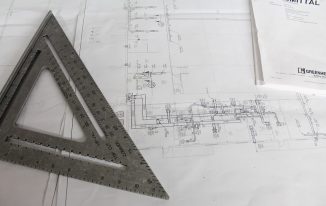Read this article to understand the topic of communication networks or network of communication in an organization (with diagram)…
Communication Networks
Organizational members connect into a various number of groups and as members of the group, they interact with each other in a specific manner. The path along which they interact is called the communication network. It is a type of pattern in which information flows between the members of the group.
It also indicates the form of single-channel and multiple channels of communication to regulate the flow of information and ensure that information reaches the desired destination. It indicates the times through which information flows between peoples.
Communication has different types of paths or networks like:
Types of Communication Network in Organization
(i) Y network
(ii) Wheel network
(iii) Chain network
(iv) Circle network
(v) All channel or star network.
1. Y network:

Here A is the main person who communicates or transfers our information with B, C, and D. It follows the formal chain of authority where an upward and downward type of communication takes place in the organizational hierarchy.
In this, an individual can easily communicate with both superior and subordinates.
Characteristics of the Y network:
(i) Sequential in nature.
(ii) Centralization process.
(iii) Flexible in nature.
2. Wheel Network:

In this network, all information, and messages flow through A, who is at the center at the wheel. A communicates with other members of the group like B, C, D, and E, while members cannot communicate with each other.
This network of communication is found in highly formal organization structures where the task-aimed approach to leadership is preferred to employee-oriented approach.
The employer (senior) communicates the information to employees while the employees (junior) do not communicate amongst themselves.
Characteristics of Wheel Network:
(i) Information passes only from authority.
(ii) Less chance of misunderstanding.
(iii) Follow the process of goal-oriented approach.
3. Chain network:

Chain network is similar to the Y network, chain network mostly follows a formal chain of command or authority where the information flows vertically upwards or downwards.
A manager and employee communicate with each other through the vertical chain of authority or command, both upwards and downwards. Information perversion is not likely to take place but a communication system becomes time-consuming.
Characteristics of Chain Network:
(i) Equal to the Y network.
(ii) Follow the process of the formal channel of authority.
(iii) Step-by-step process.
4. Circle network:

This circle network is similar to a chain network except that information flows in a circular form or direction rather than vertical form or direction. A can communicate simultaneously with two different persons, B, and C but to communicate with D, he has to pass the information with through B or C, and E.
All five individuals cannot directly communicate with each other. In this network, the lowest level of worker can communicate with the top level of manager. (A could be the top level of manager and C could be the lowest level of worker).
In this network, the formal channel of command is not followed.
Characteristics of Circle Network:
(i) Equal to the chain network.
(ii) In this channel, a person can talk to two people at the same time.
5. All channel or star network:

All the individuals in this network communicate with each other freely, permanently, and regularly.
It follows the informal channel of command or communication and provides optimum satisfaction to our individuals. Information flows very fast, though there may be a problem of coordination.
There is a single path of communication in a single-channel network for a particular position and information flows through that path only to various persons. There is usually an official path of better communication where information transfers “through proper channel” between the manager and the employee.
All information transfers through concerned managers or employees only.
Characteristics of Star Network:
(i) Only important information flows through this path.
(ii) It reduces the chances of miscommunication.
(iii) Superior control the activities of subordinates through effective communication networks.
Related Article:


